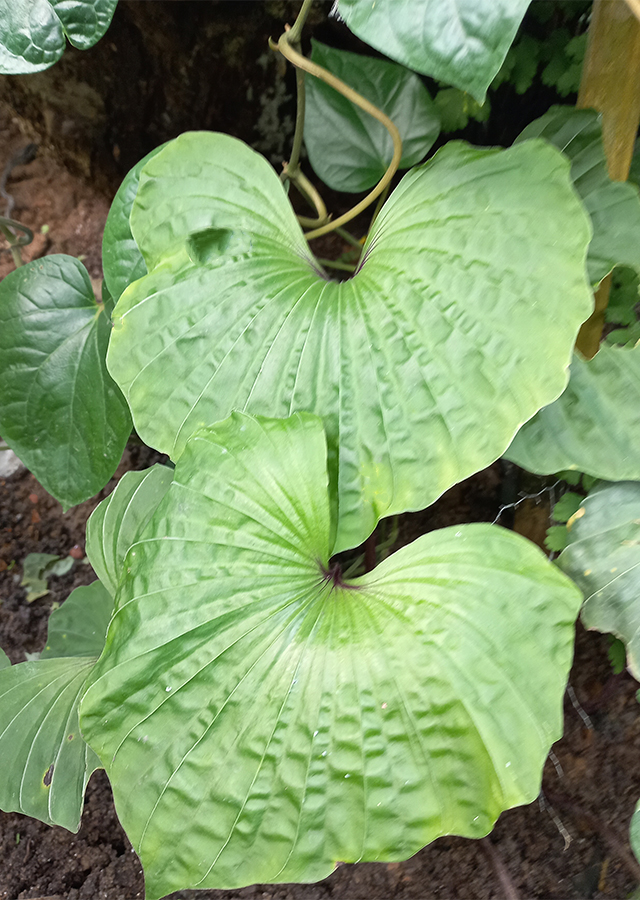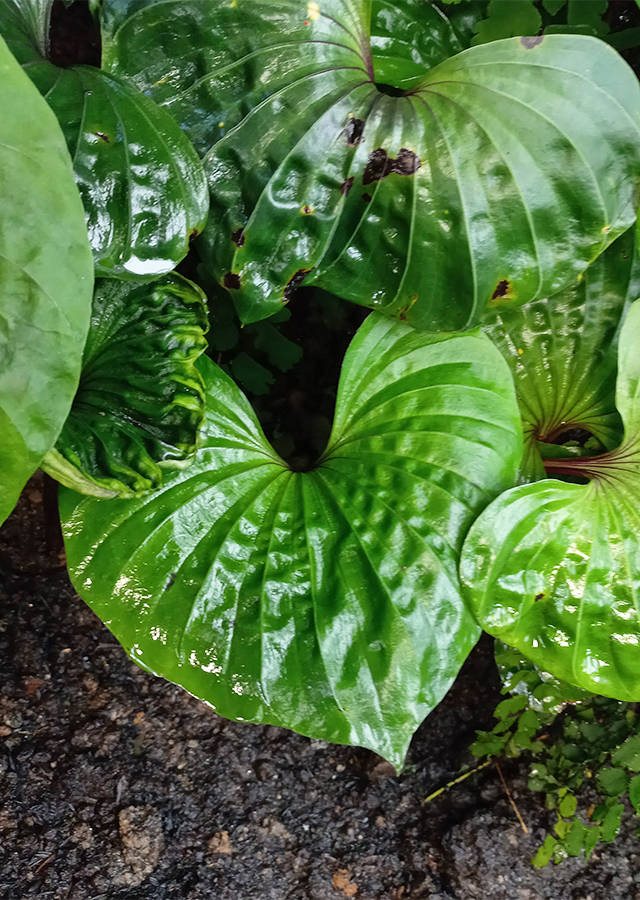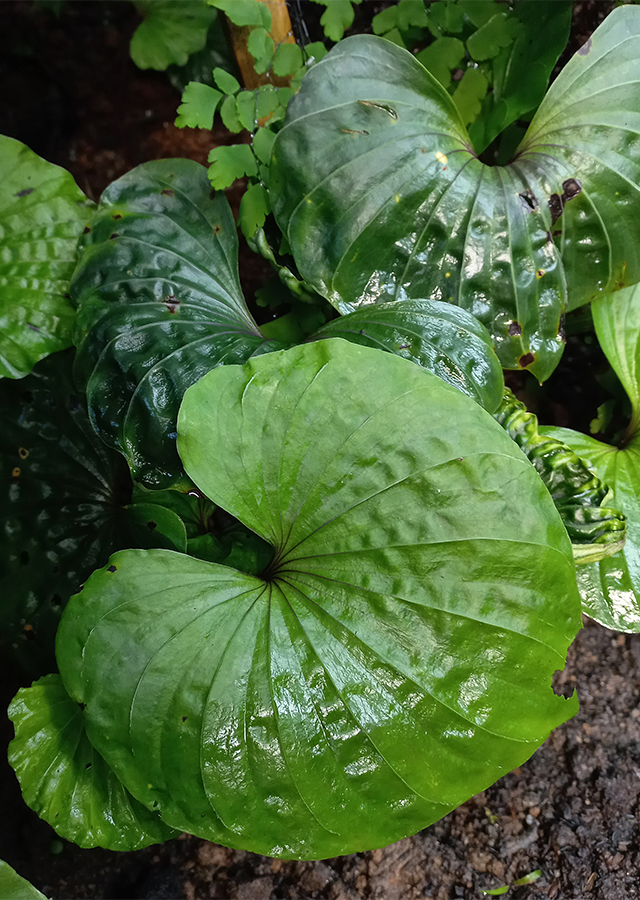Tall Shield Orchid
Nervilia concolor (Blume) Schltr.
Orchidaceae
Location in our garden
Green House



Synonym
Aplostellis flabelliformis (Lindl.) Ridl.
Cordyla concolor Blume
Epipactis carinata Roxb.
Habitus
Orchid. A terrestrial, perennial, deciduous, sympodial herb which grows in colonies with only a few individuals producing flowers in any one year. that grows 20-30 cm tall.
Part Used
Leaves
The Whole Plant
Pseudobulb
Growing Requirements
Need Shade
Habitat
Forest
Terrestrial
Overview
Native to tropical & subtropical Asia to Pacific. Its native range is China, Indian subcontinent, Myanmar, Thailand, Laos, Vietnam, Malaysia, Indonesia, Philippines, New Guinea to Australia and the Pacific.The plant is harvested from the wild for medicinal use and also sometimes for local use of its tuber, which is eaten to relieve thirst. The plant kills bugs.
Vernacular Names
Daun sa-helai sa-tahun (Malaysia), Phaen din yen (Thailand), Ch[aa]n tr[aa]u xanh (Vietnamese), Yaeyama-kuma-sô (Japanese), Ta-bin-shwe-hti (Burmese).
Agroecology
Found in forests, and sometimes on low rigdes, at elevations from sea level to 400 metres in Fiji. It occurs in forests, shaded and damp places along valleys, at elevations from 400-2,300 m. Grows best in semi-shade.
Morphology
- Tuber - firm, fleshy and juicy, underground tuber, subglobose to ovoid tuber, 10-17 mm in diameter. The tuber produces one to several lateral, subterranean runners during the leafing period, each runner producing new tubers at their apex.
- Stem - a single flowering stem around 30 cm tall.
- Leaf - a single, heart-shaped leaf up to 25 cm wide on a stem up to 20 cm long.
- Flower - between two and six pale green flowers 35–40 mm long and 30–35 mm wide are borne on an erect flowering stem 200–350 mm tall. The sepals are 17–24 mm long and about 2 mm wide and the petals are similar but slightly shorter. The labellum has three lobes and is cream-coloured or yellowish with hairy purple or green veins. The side lobes curl inwards and the middle lobe has wavy edges and three hairy ridges.
Cultivation
Generative propagation is by seed, and vegetative propagation is by division of tubers.
Chemical Constituents
Alkaloids, glycoside, saponin, phenolic compounds, amino acids, terpenes, tannins, and flavonoids.
Traditional Medicinal Uses
- The whole plant is bitter and acrid. It is considered to be antiinflammatory, antipyretic, antiseptic, cooling, diuretic, galactagogue, opthalmic and tonic. It stops bleeding. It is used to promote milk production and in the treatment of swellings, discharges, menorrhagia, mental instability, epilepsy, haemoptysis, colic, diarrhoea, vomiting, asthma, coughs, urinary complaints and weak kidneys.
- In Thailand, the pseudobulbs are used in the treatment of 'disturbances of cardiac function'.
- A decoction of the leaves, known as 'ubat meroyan' was once considered an obligatory protective medicine after childbirth in parts of Malaya.
Part Used
Reference Sources
- Fern, Ken. (2021). Useful Tropical Plants Database: Nervilia concolor (Blume) Schltr.
http://tropical.theferns.info/viewtropical.php?id=Nervilia+concolor. 15-12-2021. - Kew Royal Botanical Gardens. (). Plants Of the World Online: Nervilia concolor (Blume) Schltr. https://powo.science.kew.org/taxon/urn:lsid:ipni.org:names:645461-1. 15-12-2021.
- Myint, K.Y., et al. (2002). A Pharmacognostic Study on Ta-Bin-Shwe-Hti (Nervilia Aragoana Gaud.) And its’ Commercial Value. Government of the Union of Myanmar Ministry of Forestry Forest Department Forest Research Institute Yezin. https://www.forestdepartment.gov.mm/sites/default/files/Research%20Books%20file/3%282002%29.pdf. 15-12-2021.
- National Museum of Natural History. (No date). Tall Shield Orchid - Nervilia concolor (Blume) Schltr. https://eol.org/pages/1137657/articles#Distribution_and_habitat. 15-12-2021.

